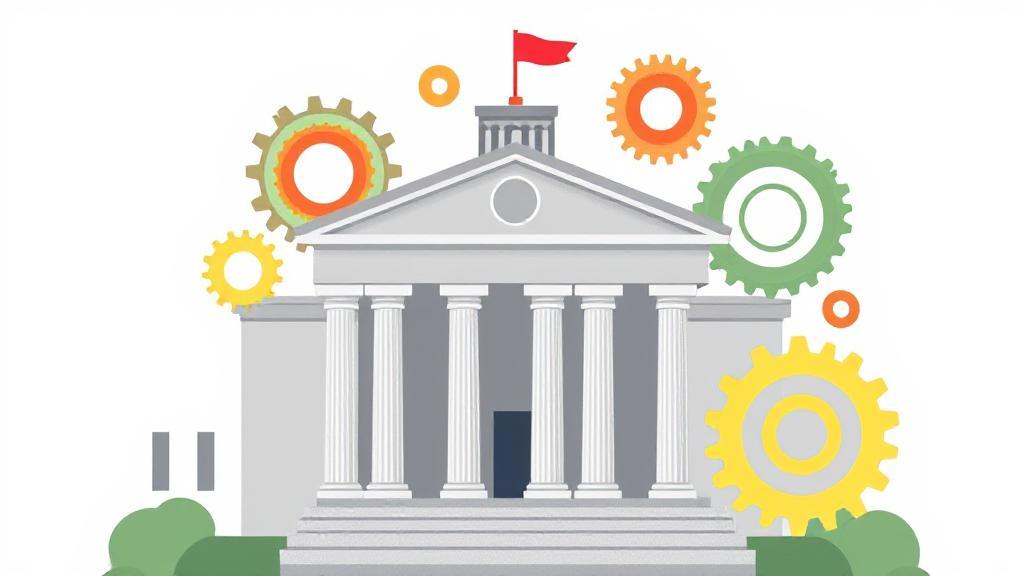The Structure of Government
Government systems vary across nations but typically share common fundamental elements. Understanding these elements is crucial for comprehending how governments operate and influence society.
Branches of Government
Most governments are divided into three main branches:
-
Executive Branch: Implements and enforces laws, typically led by a president or prime minister. Includes departments and agencies managing areas like defense, education, and health.
-
Legislative Branch: Creates laws through parliament or congress, which may be bicameral or unicameral. The United States Congress exemplifies this branch.
-
Judicial Branch: Interprets laws and ensures fair application through courts and judges. Independence is crucial to prevent undue influence from other branches.
Core Functions and Responsibilities
Policy Making and Administration
Governments develop and implement policies addressing:
- Public safety and national security
- Economic stability and growth
- Social welfare and public services
- Environmental protection
- International relations
"Public administration is the implementation of government policy and also an academic discipline that studies this implementation and prepares civil servants for working in the public service."
Levels of Government
Different Forms of Government
Various forms of government exist, each with distinct characteristics:
- Democracy: Power rests with the people, who elect representatives. Emphasizes individual rights and freedoms.
- Monarchy: Led by a king or queen, with power inherited through family lines.
- Authoritarianism: Power concentrated in a single leader or small group.
- Communism: State controls means of production, aiming to eliminate class distinctions.
Democratic Principles
Modern democratic governments typically embrace:
- Separation of powers
- Checks and balances
- Rule of law
- Protection of individual rights
Citizen Participation and Modern Challenges
Active Citizenship
Democratic governments rely on citizen involvement through:
- Voting in elections
- Public consultation processes
- Civil society organizations
- Peaceful protests
- Petitions and advocacy
Contemporary Challenges
Modern governments face several evolving challenges:
- Technological Change: Transforming service delivery, communication, and security
- Globalization: Requiring international cooperation on issues like climate change and public health
- Accountability: Growing demands for transparency and oversight
For further information, explore resources such as:
The structure and role of government continue to evolve as societies face new challenges, requiring constant adaptation in governance approaches. Understanding these systems is essential for informed citizenship and effective participation in democratic processes.
